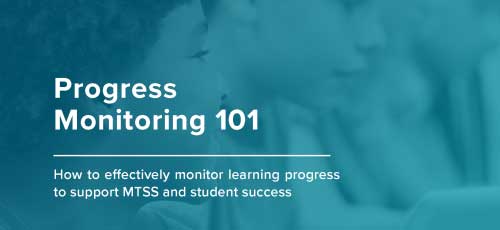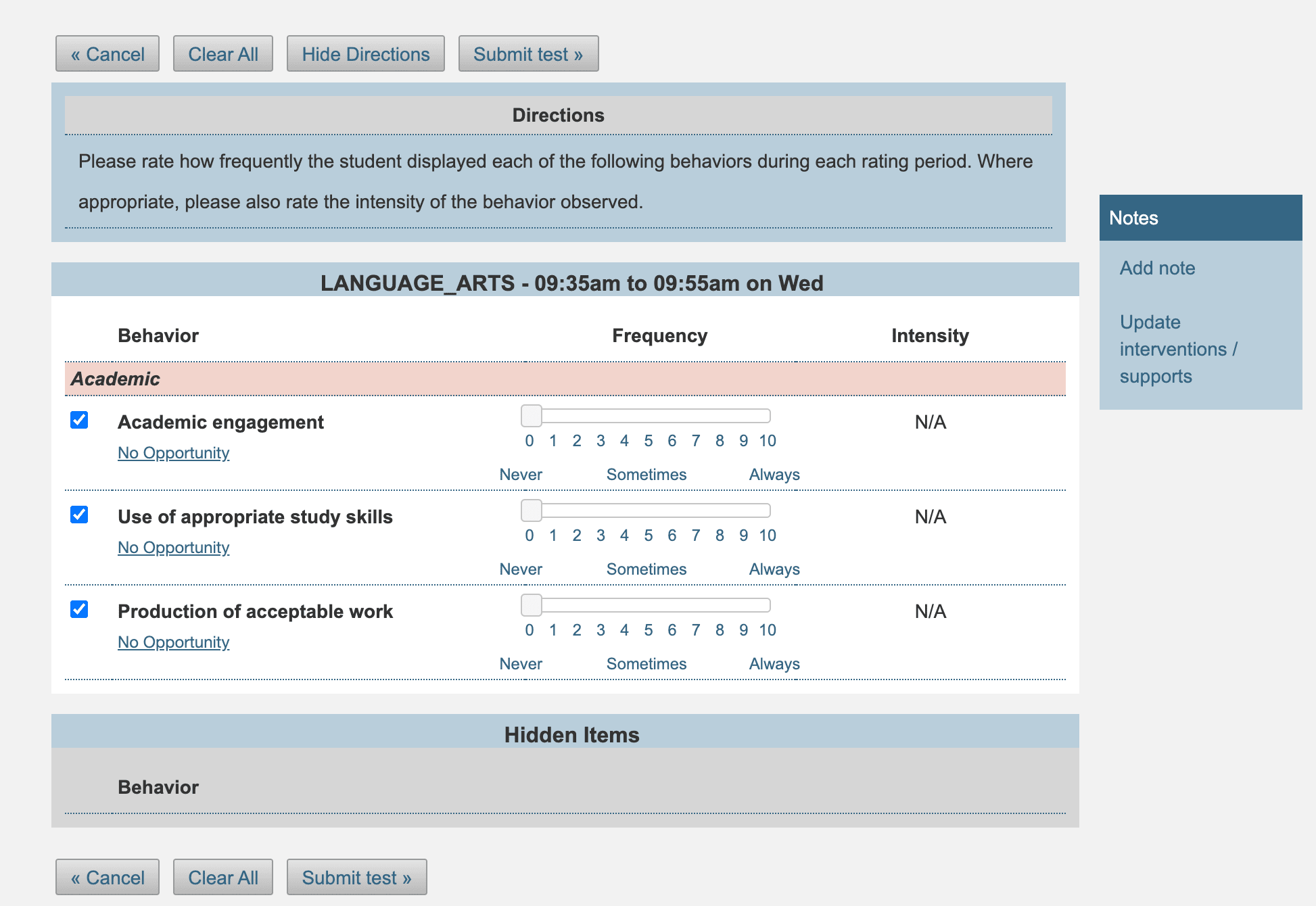Know If Progress Monitoring Interventions Are Working—in Half the Time
Our progress monitoring tools enable educators to measure students’ rate of improvement and determine if instruction and interventions are truly working six weeks earlier than traditional methods.
Calculate a student’s projected score using only six data points. While other progress monitoring tools require 12 data points, our patent-pending FAST Projection line can deliver actionable insight in 6-12 weeks.
Based on ground-breaking research on conditional probability from the University of Minnesota.
Get predictions faster.
Compared with the 12 data points most solutions require, our progress monitoring tool gives a prediction of future student performance in just six data points, saving valuable weeks (or months) of testing.
Intervene smarter.
Know when an intervention is working and when it needs to be changed.
Keep students on track.
Seeing an accurate prediction of future growth helps teachers ensure students are performing to their full potential and reaching their goals.
There are two approaches to progress monitoring—Curriculum-Based Measurement (CBM) and Computer Adaptive Tests (CAT)—but only CBM is proven effective. That’s why our approach relies on CBM to offer robust and reliable data needed to monitor students’ progress and provide the right support for academic goals.
Our progress monitoring measures are:
- Brief (1-4 minutes) and won’t take away from valuable instruction
- Simple and easy to interpret and apply
- Sensitive to growth to show the effects of interventions over short periods
- Valid, assessing only the specific skill areas that match students’ needs
- Reliable and highly predictive of future outcomes
Research shows that success in school is influenced not only by academic skills, but also social-emotional behavior (SEB). Plan interventions that nurture the whole child by combining behavior progress monitoring tools with academic progress monitoring. See how our behavior progress monitoring tool, Direct Behavior Rating (DBR), supports social-emotional behavior functioning.
Data provided from universal screening can underscore systemic problems. Use FastBridge reports to make the decision-making process more intuitive and light.
Learn more about our progress monitoring reports.
eBook

Progress Monitoring 101
Review progress monitoring best practices and learn procedures for progress monitoring and tips for interpreting progress monitoring data.
Toolkit

Progress Monitoring Toolkit
Download our progress monitoring toolkit for data analysis questions (with recommended action steps) and to increase your team’s confidence in determining whether to continue, change, or fade interventions in order to close learning gaps faster.
Webinar

Progress Monitoring: Our Educational GPS
MTSS expert Dr. Dawn Miller from the SWIFT Education Center at the University of Kansas shares how districts across the country have implemented progress monitoring within a MTSS and the importance of being able to articulate and discuss key issues with colleagues and stakeholders.
Progress monitoring tools are used to provide important information about students who are participating in targeted Tier 2 and Tier 3 interventions. The most effective progress monitoring tools are curriculum-based measures (CBMs) because they are brief and sensitive to growth in short increments of time. CBM progress monitoring tools measure the rate of improvement in a particular area of reading and math and should be administered on a weekly or biweekly basis. Progress monitoring tools for social-emotional behavior skills are different because they involve:
- Identifying one or more specific social-emotional skills or behaviors that influence the student's learning, and
- Conducting regular observations to document the frequency and severity of social-emotional skills or behaviors across settings.
Progress monitoring tools can be used for a variety of purposes within a multi-tiered system of support (MTSS). The three main reasons include:
- Evaluating student learning outcomes of students who participate in supplemental (e.g., Tier 2 or Tier 3) interventions,
- Considering instructional change, and
- Determining eligibility for other educational services
The most straightforward reason for using progress monitoring tools is to track student learning over time to show if a student has made expected gains in relation to the instruction provided. For students whose current skills are below grade level, monitoring can document the gains needed to catch up to peers
Progress monitoring tools benefit students who are struggling in school by providing a feedback loop for instruction or intervention. Specifically, progress data show, in real time, if efforts to close a learning gap are working. When supplemental intervention and progress monitoring are administered as soon as a gap is observed, students can make catch up growth in one school year. In this regard, progress monitoring tools can help to prevent the need for intensive supports like special education.
With FastBridge’s innovative progress monitoring tools, educators can determine whether targeted interventions should be maintained, modified or intensified to close achievement gaps with just six data points—that is half the time of other solutions. This is possible using the innovative algorithm, FAST Projection™, which uses conditional probability to predict if a student is responding to the targeted instruction. This allows educators to make adjustments sooner so that students get back on track quicker.
It depends. If you are a general education classroom teacher, then you should not use progress monitoring tools for all students. The regular assessments for all students participating in the Tier 1 core instruction include both universal screening and program-based measures (i.e., chapter tests). For most students, these assessments are sufficient to track their progress. If you are an interventionist or special education teacher, then yes, all of your students probably need regular progress monitoring according to the intervention schedule or each student’s Individualized Education Program (IEP).


